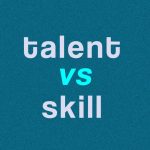The Science of Learning: How to Make Employee Training More Effective

Have you ever sat through a training session that felt like a chore? A slide full of text, a monotone voice reading it out loud, and your mind drifting to your to-do list? You’re not alone. Many employee training programs miss the mark because they don’t take into account how people actually learn.
By applying insights from cognitive science and neuroscience, organizations can create training programs that truly engage employees and help them retain and apply what they learn. Here’s how you can revolutionize employee training and unlock your workforce’s full potential.
How Our Brains Learn Best
Our brains are wired to recognize patterns, repeat information, and connect emotionally to what we learn. Ever had a song stuck in your head? That’s because your brain loves repetition. But what keeps learning exciting is an element of surprise—something unexpected that challenges our thinking.
We also learn best when we care about the information. If training feels meaningless, employees are more likely to zone out or check their phones. Emotional engagement releases dopamine, oxytocin, and endorphins—a powerful combination that makes learning enjoyable and memorable.
🔹 Example: Think of the first time you successfully completed a challenging project. That sense of accomplishment fueled your confidence and desire to learn more. The same principle applies to workplace training—employees need to see its relevance to their daily roles.
Why Multitasking Kills Learning
In today’s fast-paced world, we like to think we’re great at multitasking—but our brains aren’t built for it. Research shows that constantly switching tasks reduces focus and makes learning less effective.
🔹 Imagine this: Trying to learn an important work skill in a noisy, chaotic environment is like studying in a crowded café with loud conversations all around. Your brain struggles to retain information because it’s overstimulated.
This is where cognitive load comes in—a term describing how much information our brain can process at once. Studies suggest that we can only hold 5-9 pieces of new information in our short-term memory at any given time. If training overwhelms employees with too much content at once, they won’t retain it.
💡 Solution: Break training into bite-sized, engaging modules. This approach—known as microlearning—allows employees to learn at their own pace without feeling overloaded.
Applying Learning Science to Employee Training
So, how can organizations use these principles to improve workplace training? Here are some science-backed strategies:
1. Use Multiple Learning Formats
People learn differently. Some prefer visual aids, while others absorb information better through audio or hands-on experiences. To cater to diverse learning styles:
✔️ Include short videos, infographics, and interactive scenarios ✔️ Offer audio options like narrated lessons or podcasts ✔️ Use real-world examples and simulations to enhance engagement
🔹 Example: If training employees on sales techniques, don’t just provide written instructions. Include role-playing exercises, customer interaction simulations, and short videos demonstrating effective sales pitches.
2. Make Training Relatable Through Storytelling
Our brains are wired for stories. When information is framed as a narrative, it’s easier to remember and apply.
💡 Tip: Turn training into an engaging story where employees play the role of the hero overcoming workplace challenges.
🔹 Example: Instead of a dry compliance training, use a story-driven scenario where employees navigate ethical dilemmas and make decisions that impact their company.
3. Create Interactive and Engaging Experiences
Employees learn best when they actively engage with the material rather than passively consuming it.
✔️ Use drag-and-drop exercises, quizzes, and decision-based scenarios ✔️ Include knowledge checks to reinforce learning ✔️ Offer hands-on simulations for practical application
🔹 Example: Instead of a static cybersecurity training, simulate a phishing attack where employees identify suspicious emails and make real-time decisions.
4. Leverage Gamification for Motivation
People love challenges, rewards, and recognition—which is why gamification works.
✔️ Add badges, progress tracking, and leaderboards ✔️ Create friendly competitions to boost engagement ✔️ Offer incentives for completing training milestones
🔹 Example: A leadership training program could include challenges where employees earn badges for demonstrating problem-solving and teamwork skills.
5. Reinforce Learning Over Time
Training shouldn’t be a one-time event. Studies show that spaced learning—reviewing information at intervals—improves long-term retention.
✔️ Follow up with refresher courses and knowledge checks ✔️ Provide quick-reference guides for on-the-job support ✔️ Encourage peer discussions and mentoring to reinforce learning
🔹 Example: After a public speaking workshop, employees could receive weekly micro-tips and practice exercises to refine their skills over time.
The Future of Workplace Learning
At Elite Career Centre, we specialize in designing engaging, science-backed training programs that help employees learn effectively and retain knowledge. By incorporating storytelling, interactivity, and personalized learning, we create training that sticks—not training that employees forget the next day.
🚀 Ready to transform your employee training and build a smarter, more skilled workforce? Let’s talk!




















